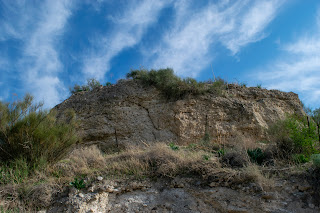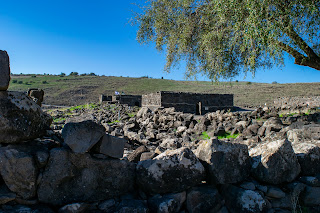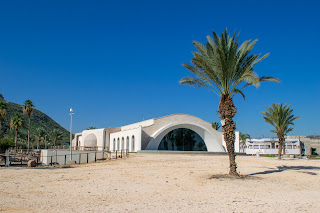When I was in the Galilee, I went to the national parks of Korazin, Beit Tsaida, and Capernaum on the northern shore. These 3 towns represent the 'ministry triangle' of Jesus, where He spent 80% of His ministry.
Yet in Matthew 11:20-24, Jesus says:
"Then Jesus began to denounce the towns in which most of his miracles had been performed, because they did not repent. “'Woe to you, Chorazin! Woe to you, Bethsaida! For if the miracles that were performed in you had been performed in Tyre and Sidon, they would have repented long ago in sackcloth and ashes. But I tell you, it will be more bearable for Tyre and Sidon on the day of judgment than for you. And you, Capernaum, will you be lifted to the heavens? No, you will go down to Hades. For if the miracles that were performed in you had been performed in Sodom, it would have remained to this day. But I tell you that it will be more bearable for Sodom on the day of judgment than for you.'”
Wow, talk about sobering. Heartbreaking, actually.
Korazin isn't mentioned specifically in the Bible other than in this passage, but we know that Jesus travelled throughout the Galilee, spent time with people, spoke, and healed people. He calls it out in His curse because of the amount of time He spent there.
A town known for its grain, Korazin was settled in 1st century AD. The remains here are actually from 3rd-4th century, as is the synagogue. However, we know that in Israel, things are built on top of their original location, so it's reasonable to believe that the original synagogue remains are below this one.
What got me, though, was seeing a carving of Medusa in the synagogue wall. I can't even imagine how that was allowed to be in the town, let alone the synagogue!
Beit Tsaida is the 'wild card' in this group, because as I reported in November, a different possible location has been found. It will take more time to determine if this is the actual Beit Tsaida, and there is strong evidence for the traditional location being the real one. It later was renamed as Julius, a Roman town, so the presence of both ruins is a strong identifier.
The town of Philip, Peter, Andrew, James, and John, Jesus and the disciples often came here to rest. He healed a blind man outside the city gates in Mark 8, and when Jesus walked on water, it was likely in front of Beit Tsaida, because He'd sent the disciples on ahead to this town. There are the remains of a fisherman's house as well (soil/fossil samples present the confirm this). However, the Sea of Galilee has shrunk so much that the shore is now 2km away. But why would there be a fisherman's house so far if the lake didn't actually come up to that village?
Capernaum is the town of Peter's mother-in-law, where Jesus did many miracles. This is where He called His first disciples, who were fishing. This is where He spent a lot of time.
The current synagogue remains are actually from the 4th century, but the foundations of the previous one are clear. So we know exactly where it was and can envision that as well.
My favorite part is the shoreline, where I sat for an hour, read my Bible, prayed, stared across at Magdala, and imagined Jesus and the disciples coming in from a long day on the lake.
WOW!!!! It was so incredible to be in each of these 3 towns, and since there weren't any tourists still in Israel, there weren't a lot of people around. I was able to read my Bible, pray, and basically have 3-D devotions, which was amazing!Still, the reality of these places are impossible to miss.



























































